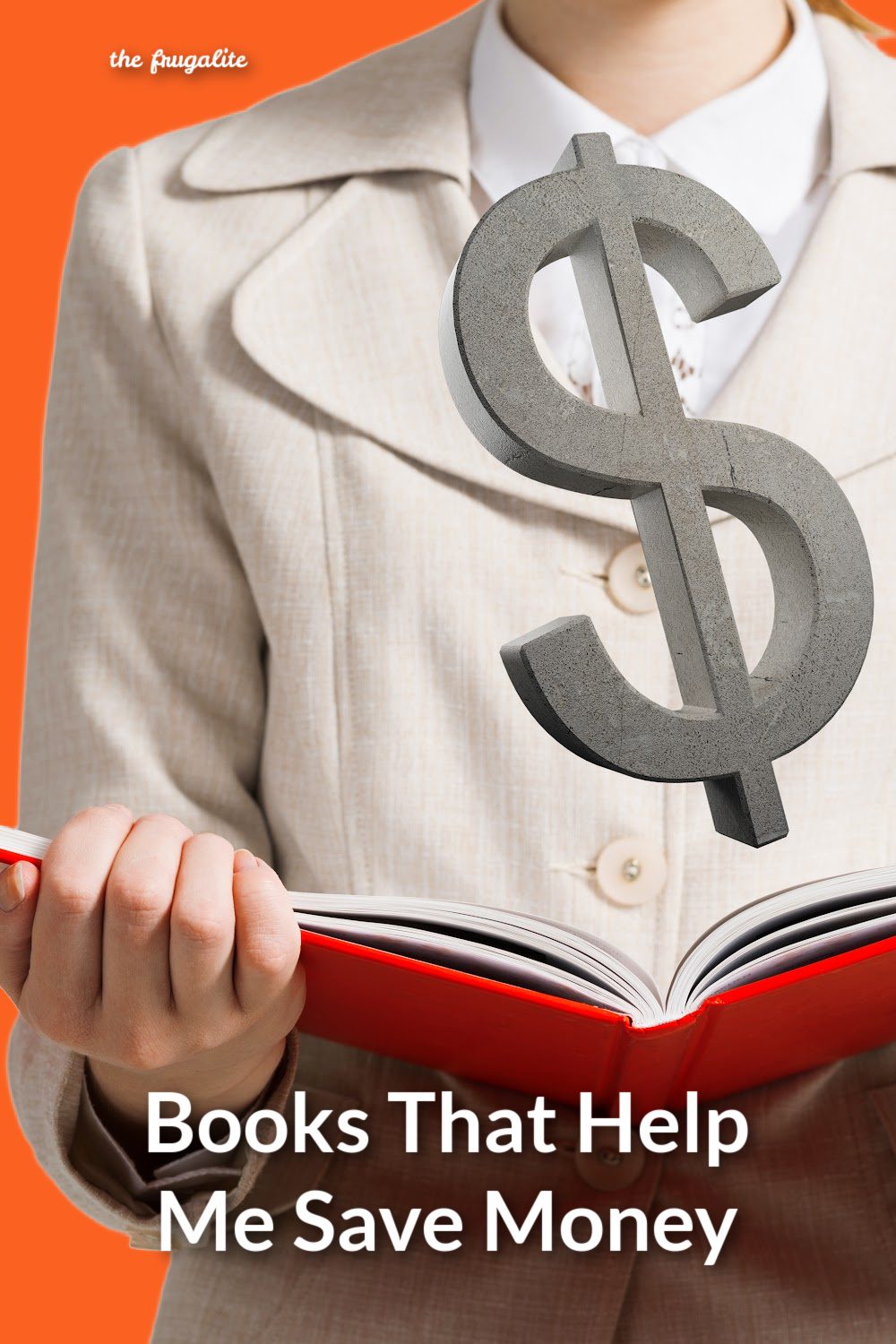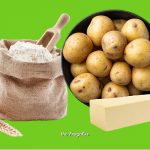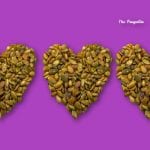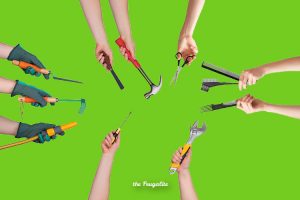(Psst: The FTC wants me to remind you that this website contains affiliate links. That means if you make a purchase from a link you click on, I might receive a small commission. This does not increase the price you’ll pay for that item nor does it decrease the awesomeness of the item. ~ Daisy)
While the internet can be a great resource for finding new ways to save, it is my books that I always turn to. As well, if the grid is down, they are still there for me! I wanted to share my treasured library of super savers with the Frugalite community in this article. I hope you find a gem that will help you save.
Old church cookbooks
 I love yard sales for those unexpected treasures. This is how I found an old church cookbook that is still on my bookshelf after several years. As I live in an 18 by 24-foot eco-cabin, I quickly get rid of things that don’t serve me well. On Half-Acre Homestead, I focus on off-grid old-time farm methods of food preservation. This old blue cookbook with a church on it would have been overlooked by many. It was worn, published in a booklet-style, with a worn cover.
I love yard sales for those unexpected treasures. This is how I found an old church cookbook that is still on my bookshelf after several years. As I live in an 18 by 24-foot eco-cabin, I quickly get rid of things that don’t serve me well. On Half-Acre Homestead, I focus on off-grid old-time farm methods of food preservation. This old blue cookbook with a church on it would have been overlooked by many. It was worn, published in a booklet-style, with a worn cover.
The moment I laid eyes on it, my spidey sense was tingling. Over the years, I have found many useful simple recipes that seem to have been lost in cookbooks just like this. I grabbed it, confident I had found a new treasure. The amount I paid? It could have been a quarter…I can’t even remember! Not too long after, I was home, browsing the cookbook.
Generally, I like to look in the pickles and preserves section first. What caught my attention was a recipe called “Lingburgh Relish.” Two women had contributed a recipe. This is also a sign that it might be useful. At the bottom of the recipe were a few words that made my day “Lasts indefinitely.” Woo hoo!
This recipe has become a mainstay in how I preserve my early cabbage and fall harvest. When we think of relish today, we tend to think only of that green stuff some of us like to put on our hot dogs. Relish can mean any veggies or fruits preserved in vinegar.
Maintained in a crock and kept covered in vinegar, I have found that my Lindburgh Relish does, indeed, last indefinitely. At least, I always eat mine before it goes bad! If you are interested in learning more, feel free to check out my How To Guide on my website. It is How To Guide 2.
As well, The Frugalite has previously published a FREE wartime cookbook that has many food and money-saving recipes for you.
More-with-Less cookbook
Another great resource book is my More-with-Less cookbook. This book was first published in 1976 and had gone through 36 printings when I bought it in the late eighties. The book, by Doris Janzen Longacre, is subtitled “suggestions by Mennonites on how to eat better and consume less of the world’s limited resources.” My goodness! They were surely before their time with this excellent cookbook.
One of the main premises of this cookbook is to reduce your impact on the planet by using fewer ingredients that “cost” more of the earth’s resources. Examples of ingredients that are reduced are meat and sugar. While the intention is different than the wartime cookbook, the goals are surprisingly similar. For this reason, the two are quite complementary.
In More-with-Less, a great section is “Beans, Soybeans, and Lentils,” with many multicultural options that offer lots of variety. Another great section is “Desserts, Cakes, and Cookies,” where many efforts are made to reduce sugar use and substitute with alternatives, like fruits.
One of my favorite recipes is Peach Kuchen, a simple low sugar pie featuring peaches and a simple dairy base that you can make with whatever you have on hand: sour cream, sour milk, yogurt, or any combination of these. The crust is so simple that even I can make it (no rolling! No fuss!). With this cookbook, I use less, eat well, save money and help our planet. Woo hoo!
A quick check online found many used copies of the original version available, as well as a new 40th-anniversary edition launched in 2016.
Back to Basics
Another of my book treasures is Back to Basics by Norman Mark and Readers Digest in 1981. Over 450 pages, this resource weighs at least a pound or two. Still, I would likely throw this in my BOB on my way out the door. Why? It has a bit of everything. Not necessarily all the details you need for every project, but a staggering introduction to virtually everything you need to live in “the old ways.”
How does this book save me money? It surely takes the place of three or four homesteading books. I access it for things I need, like a recipe for fermented pickles. I use it to increase my knowledge in areas I am planning to expand in, such as building my permanent root cellar.
I also sometimes just peruse it, as I am always likely to find something useful. For example, I was just flipping through while writing this article and saw a section on raspberry cultivation and pruning that I will read today as I am continuing the process to “tame down” my wild raspberry patch under my century maple tree.
Plant identification books
I consider my ongoing learning regarding the plants that grow on my homestead to be one of my most important projects. Why? Because many of them are edible and grow all over the homestead. Free food! However, there are poisonous plants growing here, too, such as the deadly nightshade, which sprouted up in my garden last year out of nowhere.

I have found the learning curve to identifying plants to be challenging at times. I am not a botanist. Many of the plants that don’t have distinguishing blooms all look green and somewhat similar. I bought two related resource books early on: Peterson Field Guide to Edible Wild Plants and Peterson Field Guide to Medicinal Plants and Herbs. I have not found ALL of the plants on the homestead in these books.
I also look for support from my local friends, an online forum related to my herbalist studies, and online wildflower identification websites for my locale. However, the hours I have spent pouring over these books and learning leaf and flower terminology have been fruitful.
One downside to these books is that I don’t find that the author has a very supportive attitude towards herbal medicine. However, I have yet to identify a similarly comprehensive resource that can improve on these books.
How do these save me money? I use them to identify foods on the homestead that I can eat for free. This week alone, I am eating wild carrots, dandelion greens and roots, Oyster plant greens, tender red clover leaves, and flowers, nettle leaves for tea, and milkweed sprouts (but not too many of those, as I like to leave them for the butterflies!).
Herbal medicine resource books
Identifying plants is great, but I also strive to increase my knowledge of how to use them each year. As I mentioned above, the Peterson guides may be helpful with identifying the plants, but they are less useful for how to actually use them in a herbal practice. For this reason, I find having resource books that are oriented towards herbal medicine to be crucial. For over 20 years, I have been using Heinermans’ Encyclopedia of Healing Herbs and Spices. I also use The Homegrown Herbalist Guide to Medicinal Weeds and The Homegrown Herbalist.

How does this save me money? Why, just in the last month, I have used herbs I have on hand or sourced herbs I have learned about in these books for the following issues, either for myself or local community members: difficulty sleeping, wound healing, tendonitis/sprain injury, liver cleanses, lacking energy, general spring cleanse, stop bleeding, arthritis. That’s a lot of mileage out of mostly native plants and weeds just growing on my half-acre. AND that’s a lot of self-sufficiency.
(For more information on learning herbal remedies, you may be interested in this fantastic course HERE as well.)
“Book” your savings now!
Books can be resources that support great savings. Could you see yourself trying any of the resource books offered here? Do you have one of your own you can share with us? Please tell us in the comments below.
About Colette
Colette is passionate about sharing her knowledge of thrifty living and self-sufficiency. She has developed her skills in self-reliance living in the suburbs, the city, and more recently, on her own Half-Acre Homestead. Colette lived five years completely off-grid and without running water in an eight by 24 foot tiny home while designing and building her own 18 by 24-foot eco-cabin. She has just launched her website, Half Acre Homestead. Colette invites you to stop by and visit this work in progress! Coming soon in 2022 is her exciting new online program. Interested in Resiliency, Preventative Health, and Self-Sufficient/Off-Grid Housing (to name a few!)? Stay tuned for more details!












8 thoughts on “Books That Help Me Save Money”
Field guides specific to your area are a wonderful resource! In 2017 when my back went out, I spent the gardening season learning about what’s growing in my yard. These guides are also useful if you go urban foraging. One caveat however: leaf morphology by itself can be a bit unreliable. Leaves do grow in strange ways, so use that in conjunction with other characteristics in your identification.
Old church cookbooks and preservation guides that date back several years are also good. Look for how our parents and grandparents survived events such as the Depression and the Civil War. If stuff like that doesn’t teach adaptability, I don’t know what will!
Hi Jayne, Thank you for sharing this important caveat about relying solely on leaf morphology. While the time your back went out sounds difficult, but I admire how you turned that into a learning opportunity. At the current moment, I have a few “mystery” plants growing in various places on the homestead. It has proven to be impossible to identify them solely on their leaves. I am (not so) patiently waiting for them to flower so that I can know if they are edible/medicinal.
Yes, I also love the idea of reaching back to times of challenge. I have one friend in his eighties who grew up in challenging circumstances in a small cabin with no electricity/running water. I am constantly asking him what they did for [fill in blank]. He always has a great idea for making do. Thanks so much for sharing, Jayne!
Other resources for herbal / holistic / naturopathic medicine information could include these two websites:
https://www.earthclinic.com/
https://greenmedinfo.com/
–Lewis
Hi Lewis, These are fantastic resources. Many thanks! I am huge into herbal medicine. I am a big admirer of Sayer Ji, founder of GreenMedInfo. He has a lot of integrity. I did not know about earthclinic.com I was amazed at the database of natural home remedies they are making available for free on their website. What a gem. Thank you for taking the time to share these fine resources with the Frugalite community. Now, more than ever, taking care of your immune system is important. Much appreciated!
I love my old Betty Crocker cookbooks! I know one is a 1950’s edition, and I believe I have one older. Great for simple recipes and substitutions!
Ah, Grammyprepper, You just brought a big smile to my face! My mother had an old Betty Crocker cookbook that was our constant go-to for all classic recipes. As I recall, it was like a binder-style binding. After both my sister and I had moved out, we were both AGHAST that she sold it in a yard sale. Mom, what were you thinking!?! I had written out the Favourite Pancakes recipe on a pink recipe card when I left home at 18, which I have to this day. Thanks for this walk down memory lane. I would recommend any of these old Betty Crocker cookbooks to anyone! Thanks so much!
Carla Emery’s Encyclopedia of Country Living. Has gone through many editions and is even available in PDF. Fantastic, massive resource about every aspect of homesteading. Money saving too at times.
Hi there Redbranch, Thank you for a great recommendation. I just looked it up. Thousands of reviews give it five out of five stars. Woo hoo! I am going to make this top in my list of “books to buy.” Many thanks!